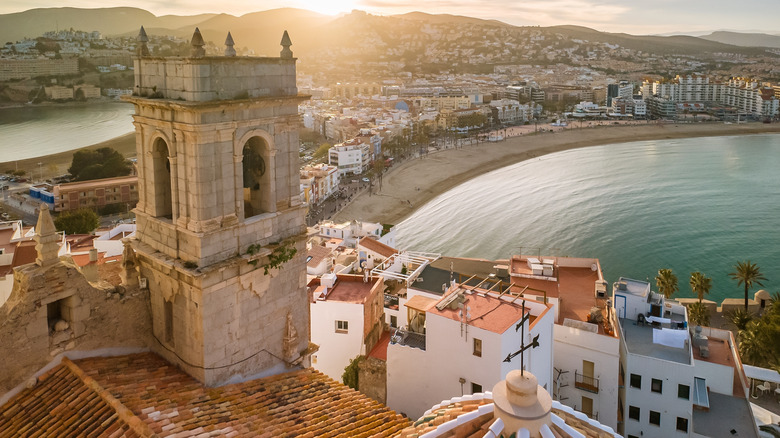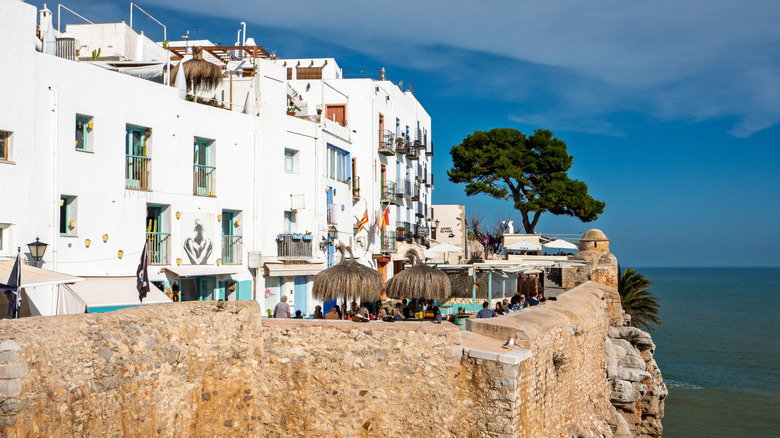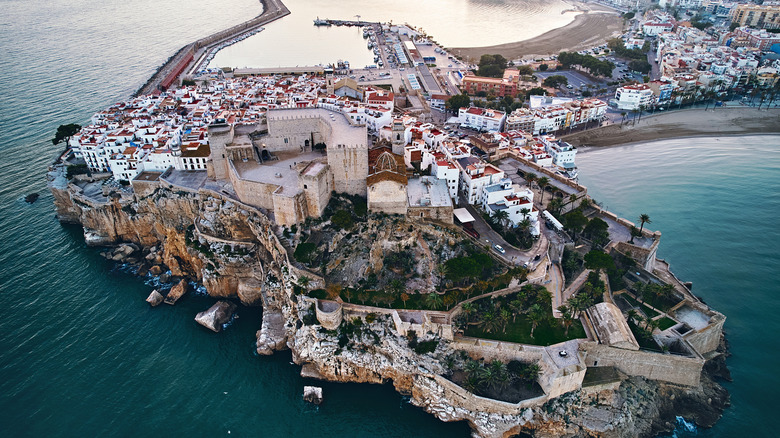Situated Between Barcelona And Valencia Lies A Historic Spanish Town With Coastal Views
Whilst many who flock to Spain for a seaside escape set their sights on Barcelona or Valencia, one town between these famous cities is an often underrated, lesser-known Mediterranean gem, steeped in history and architectural wonder, just waiting to be explored. This is Peñíscola (pronounced pen-yees-co-la), a place where ancient stone walls meet sparkling, turquoise waters, and cobbled streets wind through a fortress city shaped by centuries of conflict, religion, and trade. While the town isn't large, what it lacks in size it makes up for in cultural depth and geographical beauty.
The town's most distinctive feature is its stunning medieval castle, Castillo del Papa Luna, perched high on a rocky peninsula that juts out into the Mediterranean. Even the creators of the popular HBO series "Game of Thrones" were drawn to this fortress, as it was used to create numerous locations in the fantastical world. While the main town itself is like most other Spanish towns that have been shaped by tourism (i.e, seaside hotels, large apartment complexes, and promenades), the medieval old quarter retains a strong sense of identity rooted in its time as a Papal stronghold and military fortress.
Beyond its fortified castle walls and cobblestone alleyways, Peñíscola offers beautiful, family-friendly beaches, nearby parks, and access to quiet coves and scenic hiking trails. While summer brings in seasonal tourism, especially from within Spain, Peñíscola remains less saturated with international visitors than many other coastal destinations. As a result, it offers an experience that feels authentic and relaxed, rooted in the rhythms of a place that has endured the rise and fall of empires, yet still welcomes travelers with open doors and refreshing sea air.
Explore Peñíscola's castle and old town
Visitors to Peñíscola today have the opportunity to not only admire the fortress from the outside but also explore its magnificent interior. Built by the Knights Templar between 1294 and 1307 (and later serving as a place of refuge for Papa Luna, the "Antipope" Benedict XIII), this fortress has seen its fair share of history. Visitors have access to different rooms, including a chapel, a dungeon, and in true Spanish fashion, a wine cellar. Don't miss the roof terrace, with panoramic views of the sea, or the view of the adjacent Parque de la Artillería, a summer garden where visitors can walk through palm groves while taking in sweeping bay views.
Surrounding the castle is an intertwining system of narrow, cobblestone streets lined with white washed buildings trimmed in blue — an architectural style that makes visitors feel as though they've stepped foot on a Greek island. These streets are mostly pedestrian-only, making them a pleasure to explore at your own pace. Here, you'll find small boutiques selling locally made items, cozy tapas bars tucked into ancient stone archways, and hidden plazas to enjoy a morning coffee. Pay a visit to the ornate Casa de las Conchas, a small home decorated in shells — one of the town's most iconic photo ops.
Peñíscola's coastline also features two main beaches, Playa Norte, a wide, family-friendly sandy stretch of beach with a lively promenade, and Playa Sur, which offers visitors a more laid-back and local experience. Travelers looking to escape into nature can do so at the Serra d'Irta Natural Park, which sits south of the town and offers a wide range of hiking and biking trails, as well as secluded swimming opportunities.
Where to stay and how to arrive in Peñíscolaa
While Peñíscola may be small, there are still multiple places to choose from to extend your trip. Those looking for a place with historic ambiance should check out Hostal La Garita or Dio Esta Bien, both smaller boutique hotels in the old town with sea-view terraces. For castle and beach views in a more modern setting, look into Hotel Boutique La Mar or Estrella del Mar. Rh Don Carlos & Spa is great for those looking to enjoy a more pampered stay, and Joanna Hotel is a convenient boutique hotel offering stylish rooms, dining, and easy beach access.
Of course, you can't come to this part of Spain without trying the famed paella. El Pescador Ermitaño and Restaurante Papa Luna are top-rated spots to try this delicious rice dish, amongst other, more fishy dishes. Most restaurants offer a menu del dia (value fixed-price midday menus), with three courses, bread, a drink, and dessert, ideal for those looking to sample local cuisine on a budget. Dinner time in Spain typically starts after 8PM, so avoid the common mistake most travelers make in Spain by getting caught between meal times.
Getting to Peniscola from Valencia or Barcelona is fairly straightforward, however, those without a car may have a harder time. Visitors can catch a train (which can take anywhere from 2 to 2.5 hours) from Valencia Nord or Joaquin Sorolla Station to Benicarlo-Peniscola Station. From the Benicarlo Station, visitors need to take a bus or taxi to Peniscola. Be warned, though, the bus system seems to only function during summer, so those visiting off-season will need to taxi. Those coming from Barcelona will take a train from Barcelona Sants to Benicarlo-Peniscola (about a two-hour ride), and follow the same instructions.


